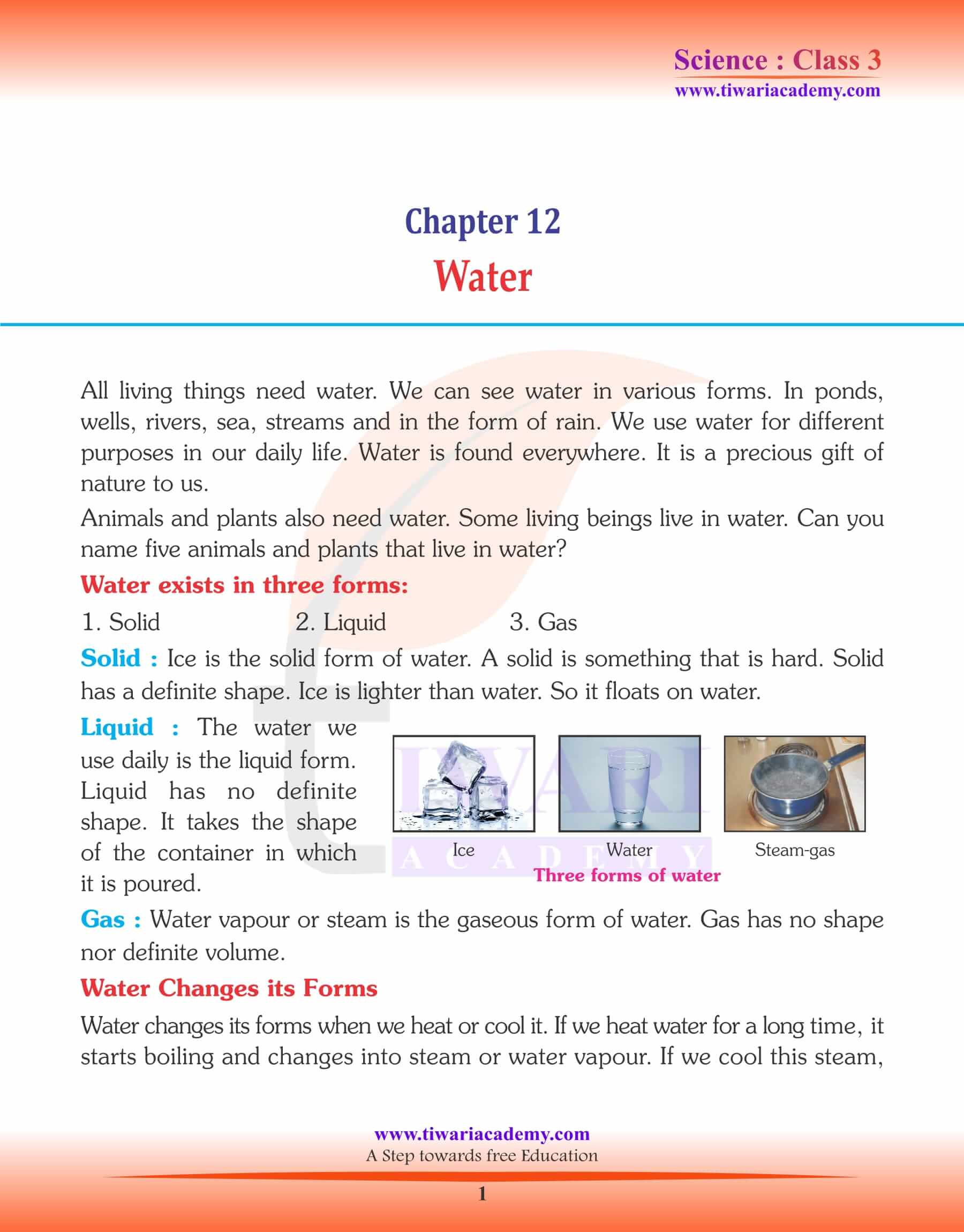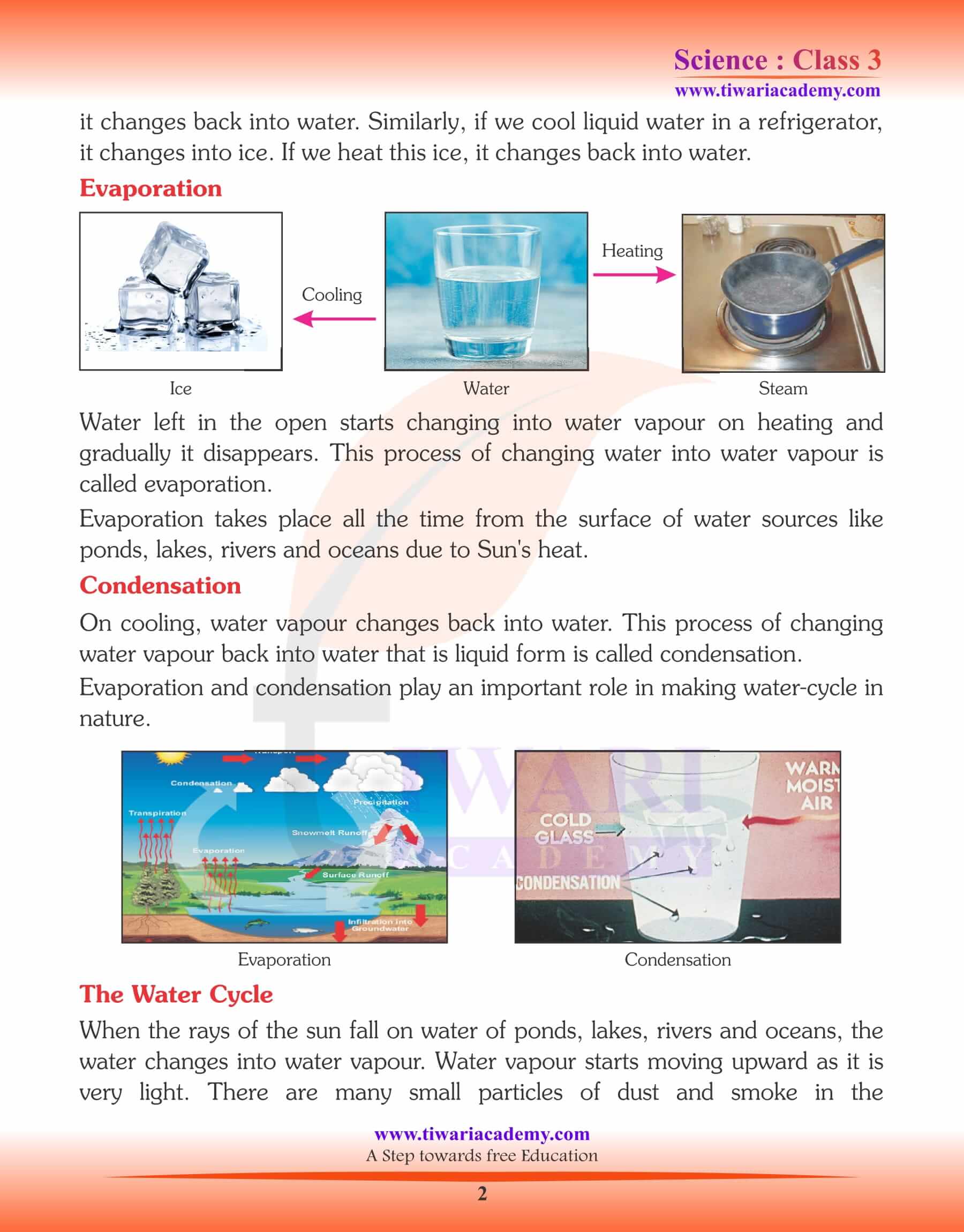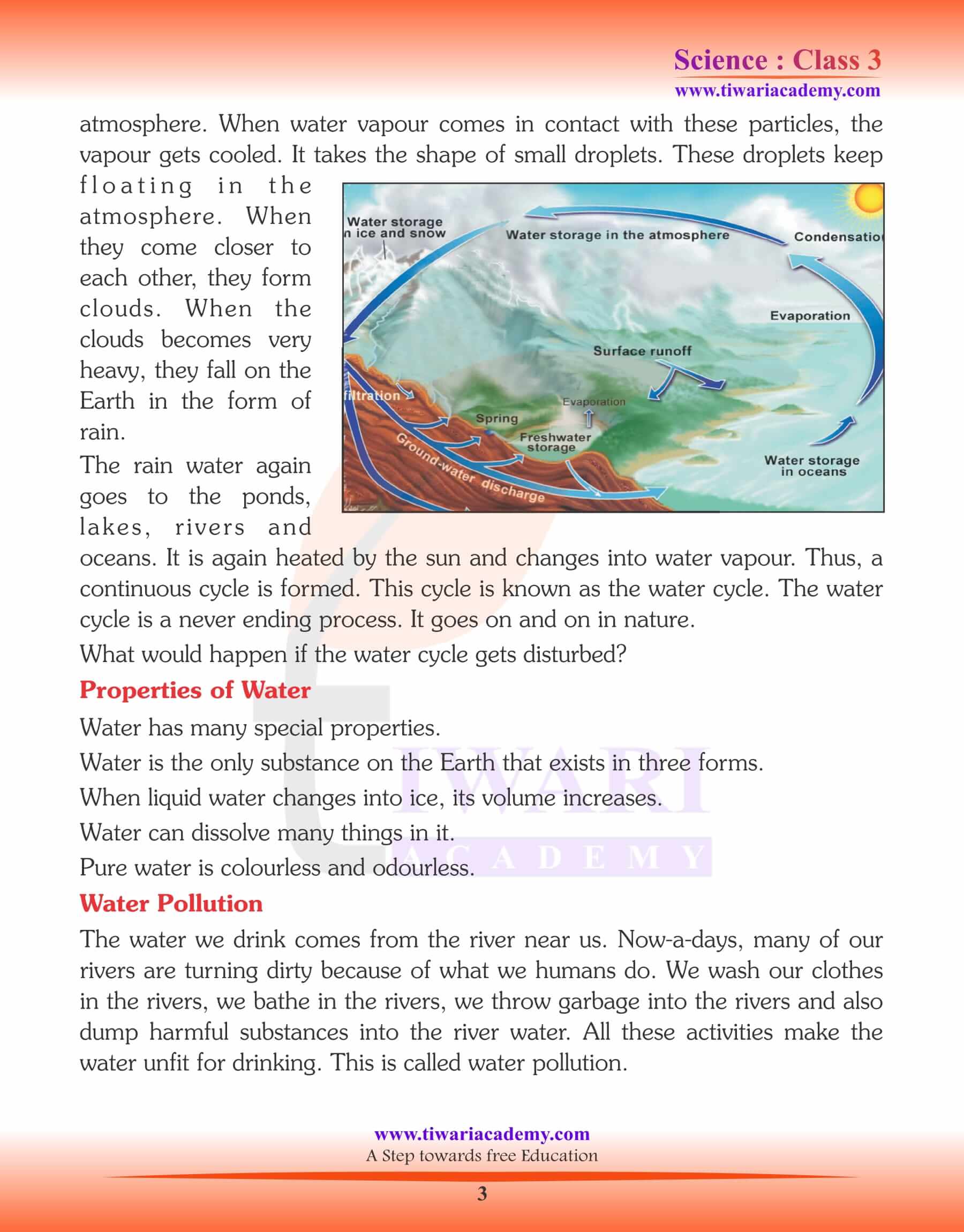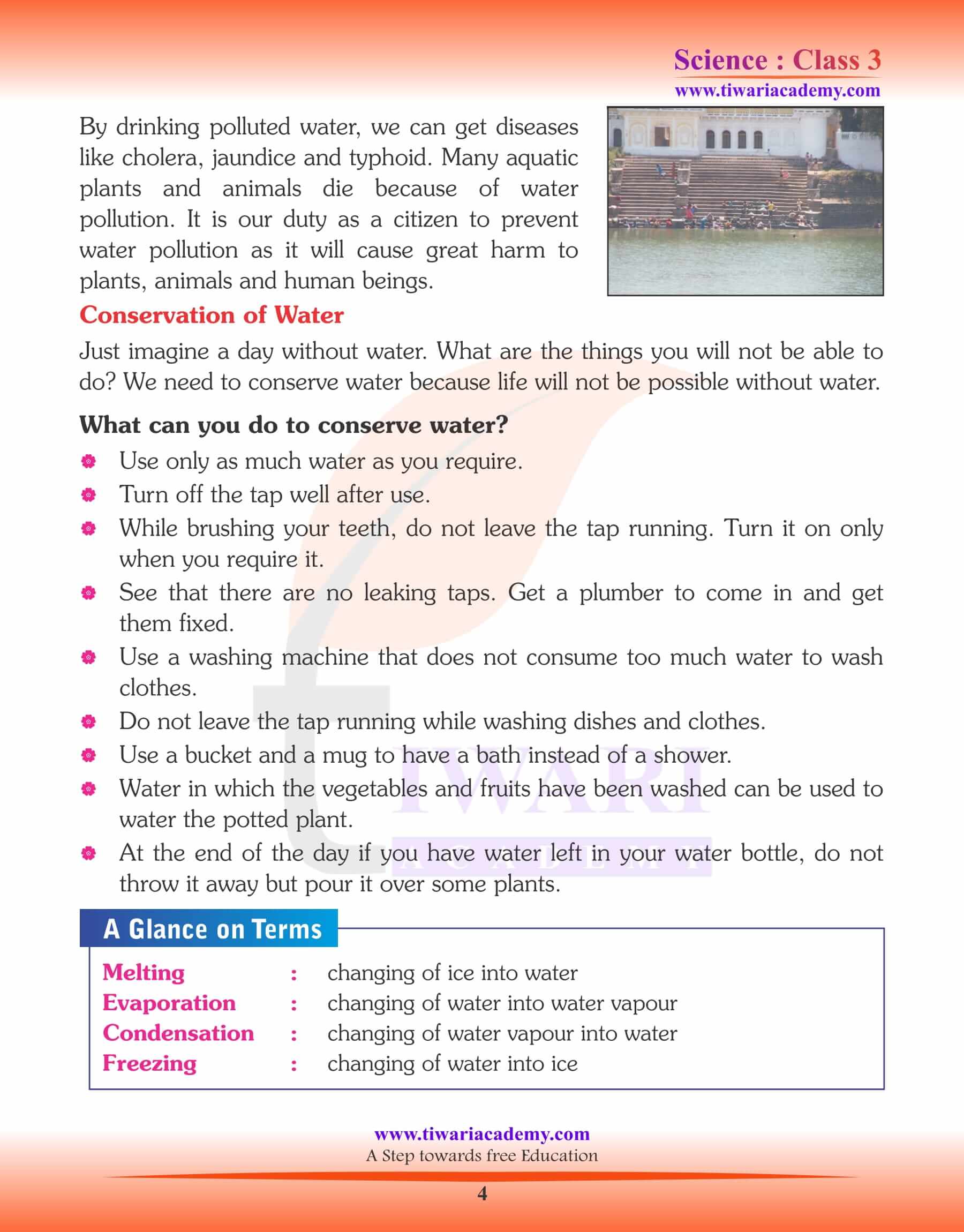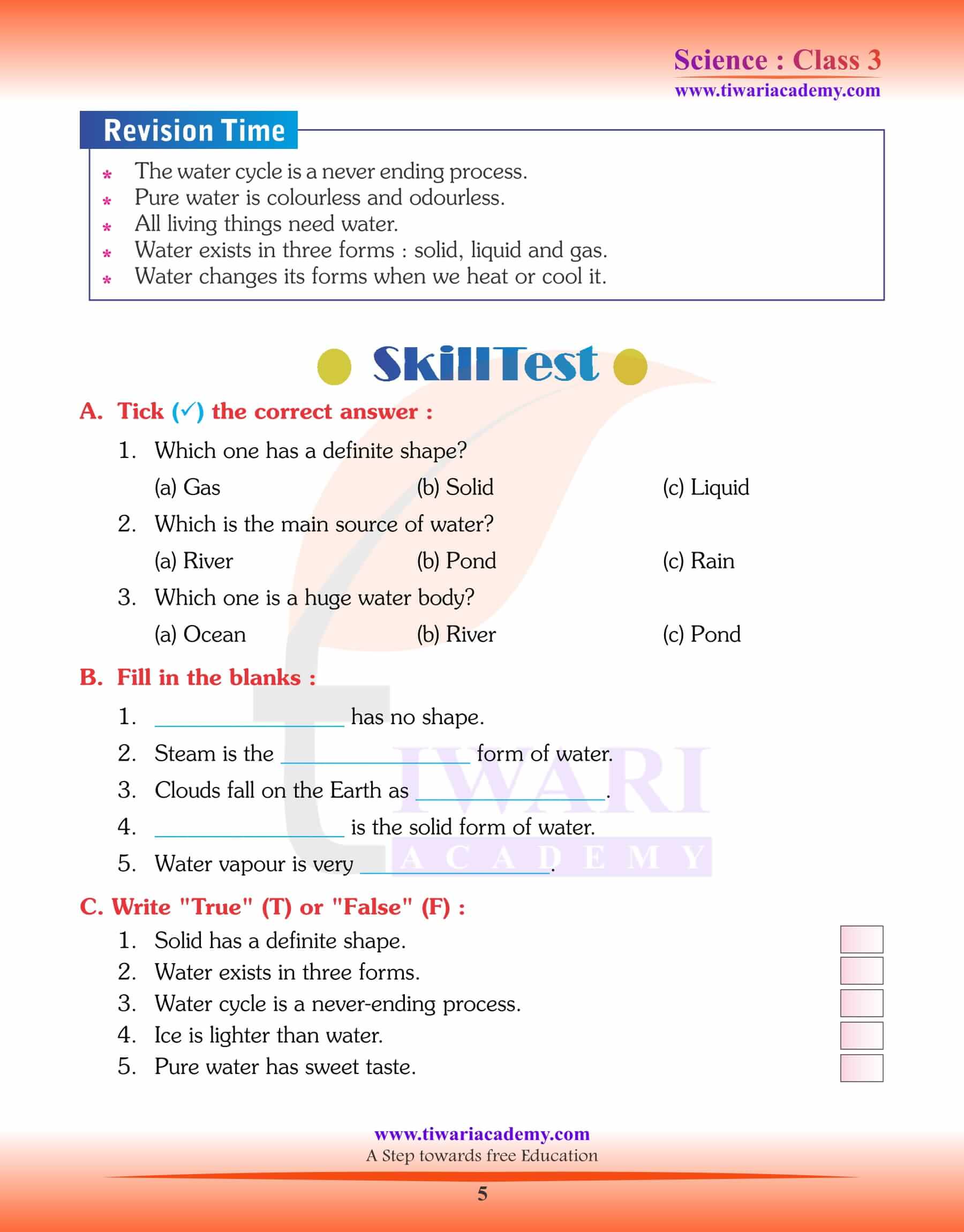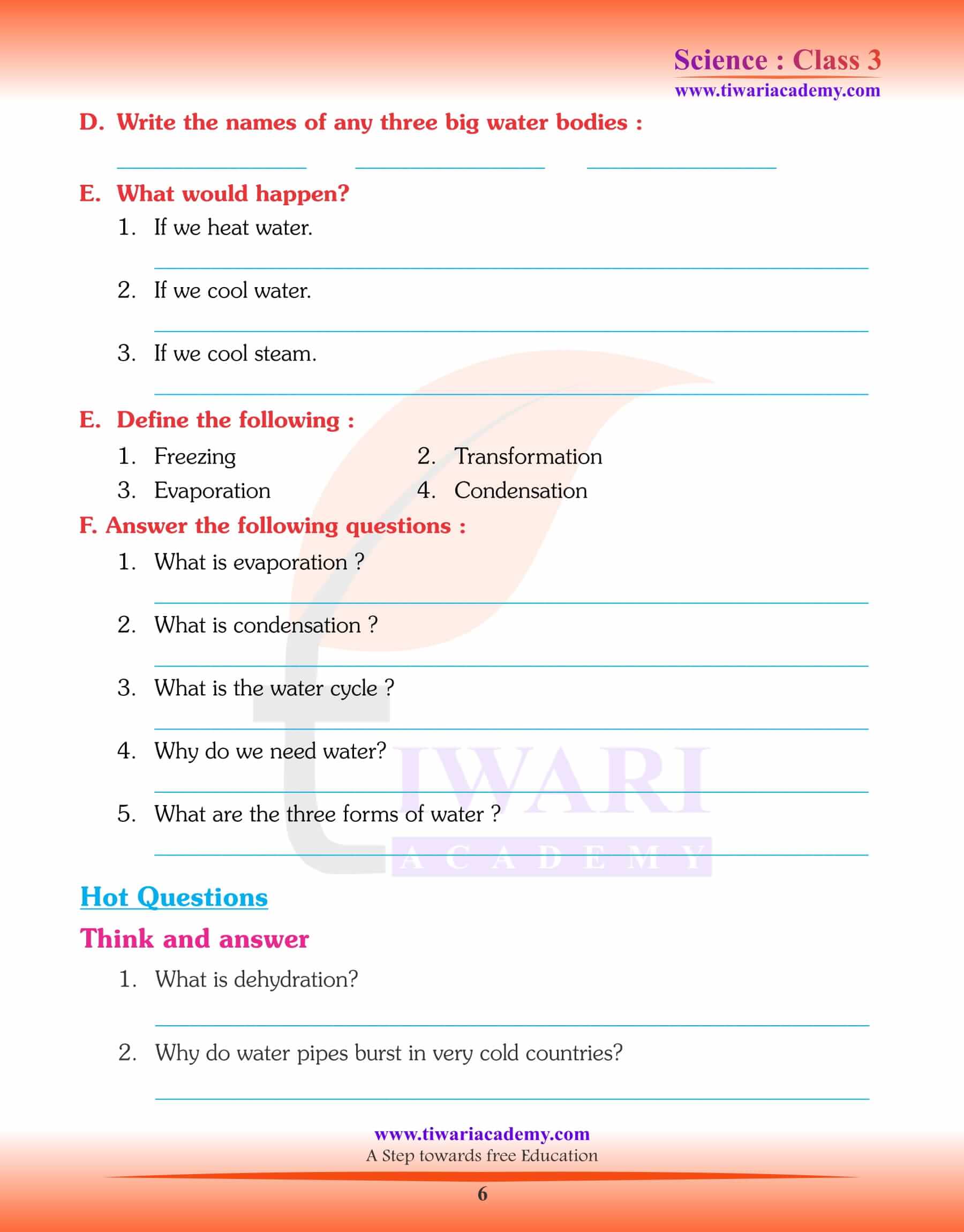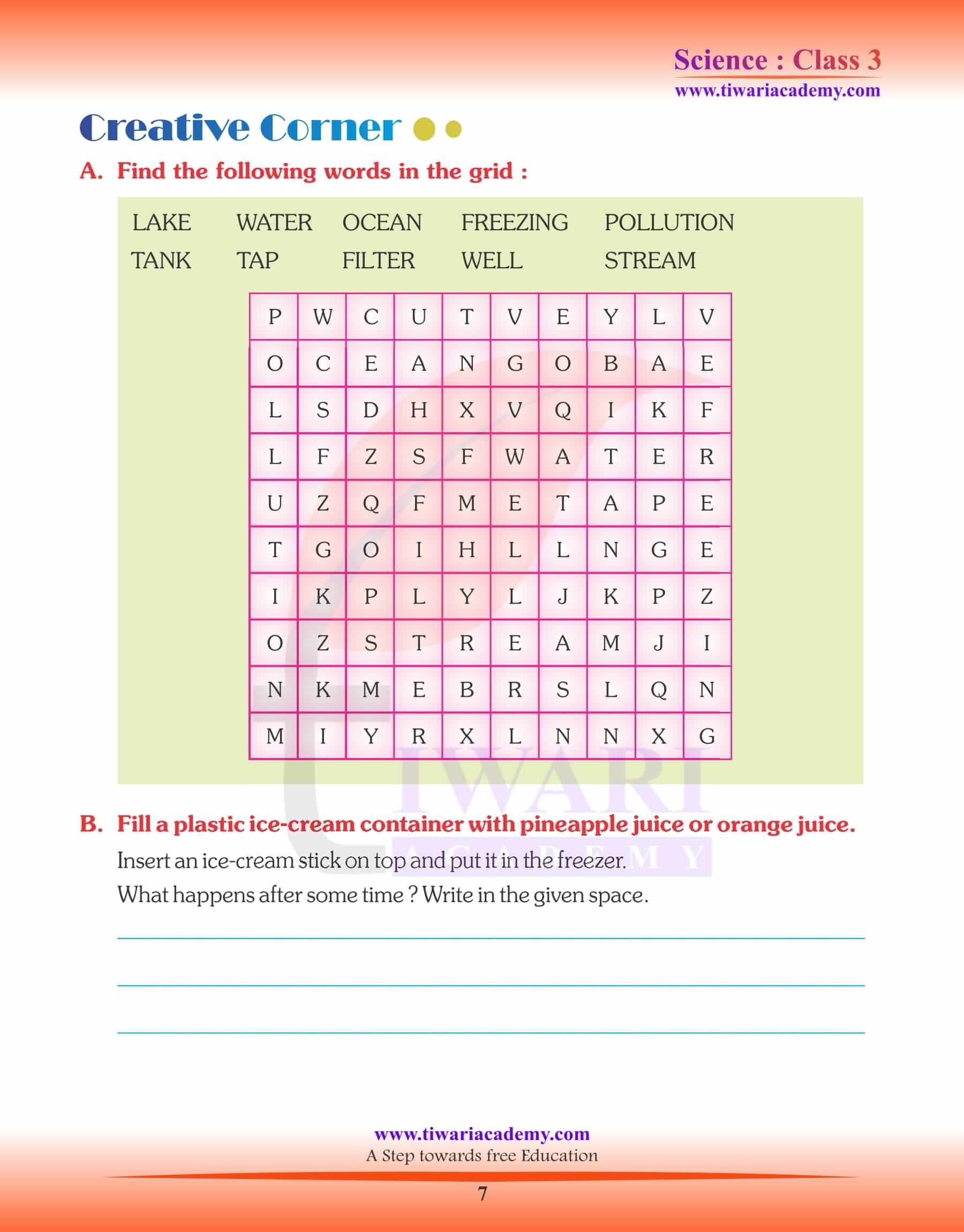NCERT Solutions for Class 3 Science Chapter 12 Water updated for new session 2024-25. We have added some extra questions with suitable answers. The contents of the class 3 Science books are based on the CBSE syllabus only. Students can get the perfect knowledge by reading these school books. This NCERT based Science book provides good supportive study material.
Study Material for Class 3 Science Chapter 12
Class 3 Science Chapter 12 Water
Water
We know that there is approximately 72% earth surface is covered by water. All living things need water. We can see water in various forms. In ponds, wells, rivers, sea, streams and in the form of rain. We use water for different purposes in our daily life. Water is found everywhere. It is a precious gift of nature to us.
Forms of Water
Water exists in three forms:
1. Solid
2. Liquid
3. Gas
Solid
Ice is the solid form of water. A solid is something that is hard. Solid has a definite shape. Ice is lighter than water. So it floats on water.
Liquid
The water we use daily is the liquid form. Liquid has no definite shape. It takes the shape of the container in which it is poured.
Gas
Water vapour or steam is the gaseous form of water. Gas has no shape nor definite volume.
Water Changes its Forms
Water changes its forms when we heat or cool it. If we heat water for a long time, it starts boiling and changes into steam or water vapour. If we cool this steam, it changes back into water. Similarly, if we cool liquid water in a refrigerator, it changes into ice. If we heat this ice, it changes back into water.
Evaporation
Evaporation takes place all the time from the surface of water sources like ponds, lakes, rivers and oceans due to Sun’s heat.
Condensation
On cooling, water vapour changes back into water. This process of changing water vapour back into water that is liquid form is called condensation. Evaporation and condensation play an important role in making water-cycle in nature.
The Water Cycle
When the rays of the sun fall on water bodies like ponds, lakes, rivers and oceans, the water changes into water vapour. At high altitude temp is very low so these water vapours get condes and change into water droplets. When they come closer to each other, they form clouds. When the clouds become very heavy, they fall on the Earth in the form of rain. The rain water again goes to the ponds, lakes, rivers and oceans. It is again heated by the sun and changes into water vapour. Thus, a continuous cycle is formed. This cycle is known as the water cycle.
Properties of Water
1. Water has many special properties.
2. Water is the only substance on the Earth that exists in three forms.
3. When liquid water changes into ice, its volume increases.
4. Water can dissolve many things in it.
5. Pure water is colourless and odourless.
Water Pollution
The water we drink comes from the river near us. Now-a-days, many of our rivers are turning dirty because of what we humans do. We wash our clothes in the rivers, we bathe in the rivers, we throw garbage into the rivers and also dump harmful substances into the river water. All these activities make the water unfit for drinking. This is called water pollution.
Conservation of Water
We need to conserve water because life will not be possible without water.
1. Use only as much water as you require.
2. Turn off the tap well after use.
3. While brushing your teeth, do not leave the tap running.
4. Use a washing machine that does not consume too much water to wash clothes.
5. Do not leave the tap running while washing dishes and clothes.
6. Use a bucket and a mug to have a bath instead of a shower.
7. Water in which the vegetables and fruits have been washed can be used to water the potted plant.
8. At the end of the day if you have water left in your water bottle, do not throw it away but pour it over some plants.
Important points
1. The water cycle is a never ending process.
2. Pure water is colourless and odourless.
3. All living things need water.
4. Water exists in three forms: solid, liquid and gas.
5. Water changes its forms when we heat or cool it.
Select correct option for given questions:
Fill in the blanks:
1. _______ has no shape.
2. Steam is the _____ form of water.
3. Clouds fall on the Earth as _____.
4. _______ is the solid form of water.
5. Water vapour is very _______.
Answers:
1. liquid
2. gas
3. rain
4. Ice
5. light
Write “True” (T) or “False” (F):
1. Solid has a definite shape.
2. Water exists in three forms.
3. Water cycle is a never-ending process.
4. Ice is lighter than water.
5. Pure water has sweet taste.
Answers:
1. T
2. T
3. T
4. T
5. F
What is evaporation?
If we heat water for a long time, it starts boiling and changes into steam or water vapour. This process called evaporation.
What is condensation?
On cooling, water vapour changes back into water. This process of changing water vapour back into water that is liquid form is called condensation.
What is the water cycle?
Heat of sun vapourise water from water bodies. Vapours condense in the form of rain. This water collected again in water bodies and same process take place again. This process called water cycle
